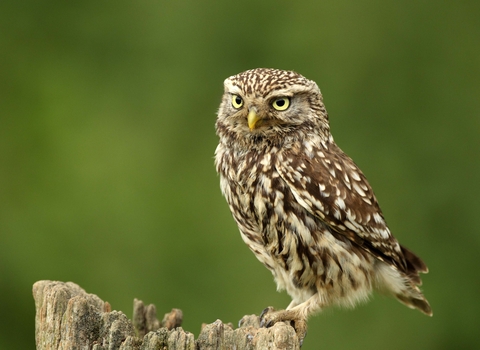
©Luke Massey/2020VISION
Little owl
Introduced into the UK in the 19th century, the diminutive little owl can now be seen along hedgerows, on farmland and in parkland across England and Wales. It often perches on a pole or rock, looking out for its unsuspecting prey.
Scientific name
Athene noctuaWhen to see
January to DecemberSpecies information
Category
Statistics
Length: 21-23cmWingspan: 56cm
Weight: 180g
Average lifespan: 3 years
Introduced, non-native species.
About
Although mainly nocturnal, the little owl can be spotted in the day hunting invertebrates (especially worms), small mammals, reptiles, amphibians and small birds. It is often seen perched a telegraph pole, an old parkland tree, along a hedgerow, or on a rock; from these positions, it quietly scans the ground for prey. When it spots something, it swoops down and catches its victim with either its claws or beak. little owls breed between March and August, forming monogamous pairs and nesting in hollow trees.How to identify
The little owl is small and brown, with a short tail and yellow eyes.Distribution
Found in England, Wales and southern Scotland.Did you know?
The little owl was introduced to the UK from the continent in the 19th century.Watch
Little Owls (https://vimeo.com/447525373)
Little Owls by Russell Savory
